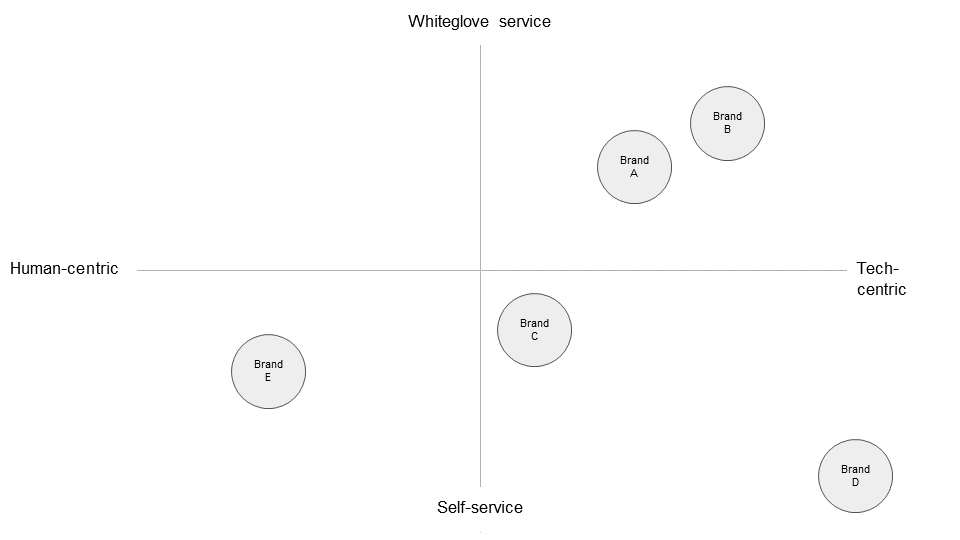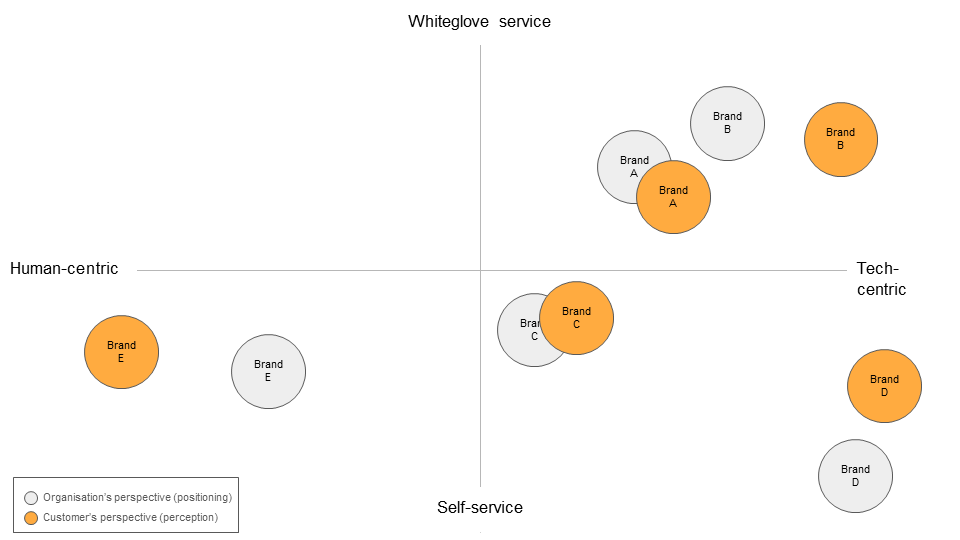The power of positioning: how to realign customer perception

The way you’re seen in the market and the way you want to be seen can be two very different things.
Misalignment can lead to ineffective marketing and missed opportunities. Why, then, do so many brands not see the gaps forming? And what can you do to make sure you spot them and close them?
Mind the perception gap
Positioning yourself in the minds of your customers is a continuous process. Not only must you ensure that every interaction is consistent with your intent, but you must also make peace with the fact that you have only so much control over the situation.
This is because the way customers understand and experience your brand is also affected by their interactions with other brands, and is often highly subjective.
When your organisation’s internal intention – your positioning – and the external experience – customer perception – become misaligned, problems arise and efforts need to be made to realign them.
The first step is to identify the misalignment, and there are two very simple frameworks that will help you do this: a positioning map and a perceptual map.
On the face of it, these two maps are very similar because they are both on a 2×2 matrix and give you a view of how your brand/product/service compares to your competitors based on a set of criteria that your audience cares about, e.g. quality and price.
But, there are critical differences that set them apart:
- A positioning map comes from the perspective of the organisation; it is an objective view of how the brand/product/service performs based on key features and facts e.g. X number of customer service agents, X number of retail outlets etc.
- A perceptual map is built from the external perspective of the customer/prospect. It is subjective, so it could be factually correct or not, and often informed by their own personal experiences or preferences.
Basically, it’s all about vibe.
| Positioning map | Perceptual map | |
| What does it tell you? | Where you are positioned in the market relative to your competitor set. | How your audience sees you and understands what you offer. |
| Who’s involved? | Inputs come from within the organisation. | Inputs come from external stakeholders e.g. customers, industry thought leaders and partners. |
| What inputs are required? | Objective facts and features about the brand/product/service e.g. the number of customer service agents, number of products, price point etc. | The audience’s subjective perception of how the brand’s/product’s/service’s facts and features compare to competitors. For example, does Brand A have more customer service agents than Brand B? Is Brand A more expensive than Brand B? |
| Useful by itself? | Not really. It needs a comparison because it won’t tell you something that you don’t already know. | Yes. It tells you how your external stakeholders perceive you. |
Positioning maps and perceptual maps: what’s the difference?
While both can be used independently, together they help you determine whether your ambition for the brand/product/service positioning is aligned with the customer or prospect’s perception.
Refinding your alignment
Misalignment can occur for a number of reasons, e.g., your messaging doesn’t reflect your offering, products you believe to be premium are found in places that your customer perceives as cheap, or maybe some of your people aren’t as friendly and helpful as those that customers have experienced from other players in your space.
The important thing is that, through the positioning and perceptual mapping exercises, you gain an understanding of the gaps and misalignments so you can then implement a plan to resolve them.
Here are some tips to make the most of your positioning and perceptual maps:
Determine your criteria
The criteria you use to compare yourself and your competitors should be things that your customers really care about, such as customer service and digital capabilities.
The same criteria should be used across your positioning map and perceptual map so you can meaningfully compare the two maps.
Make your maps
Plot your positioning map first and then your perceptual map before overlaying the results to see where the misalignment and gaps exist. See Map 2 for an example.
Label your axes
On each map’s 2×2 matrix, label each end of the X and Y axes with as polarising a scale as possible so you have plenty of space to plot each brand.
For example, if your chosen criteria were customer service (Y-axis) and digital capabilities (X-axis), the map could look something like Map 1.
Leverage the customer’s voice
Do this as much as possible to gain real insights into the true perception of your brand/product/service in the market.

Map 1: positioning map example

Map 2: Overlaying the positioning and perceptual map
Once you’ve determined the gaps and gone through the motions to attempt to realign positioning and perception, remember to adapt your communication strategy.
This step is often overlooked because organisations expect audiences to intuitively pick up on the changes for themselves. While this is possible, it’s inefficient and risky.
People are busy, and they never think about your brand/product/service as much as you do, so the likelihood of them noticing the change quickly is very low.
After you refine your positioning, you have a new story to tell.
This new story gives you the opportunity to re-engage lapsed customers and prospects who’ve gone cold, engage your current customers to remain front of mind, and capture new and previously uninterested audiences. It’s also an opportunity to engage your internal audiences who can help embed and endorse the changes.
***
This is the second post in the Power of Positioning series. You can read the first post here. In the next post, we’ll discuss knowing when it’s the right time for repositioning and how to approach it.

